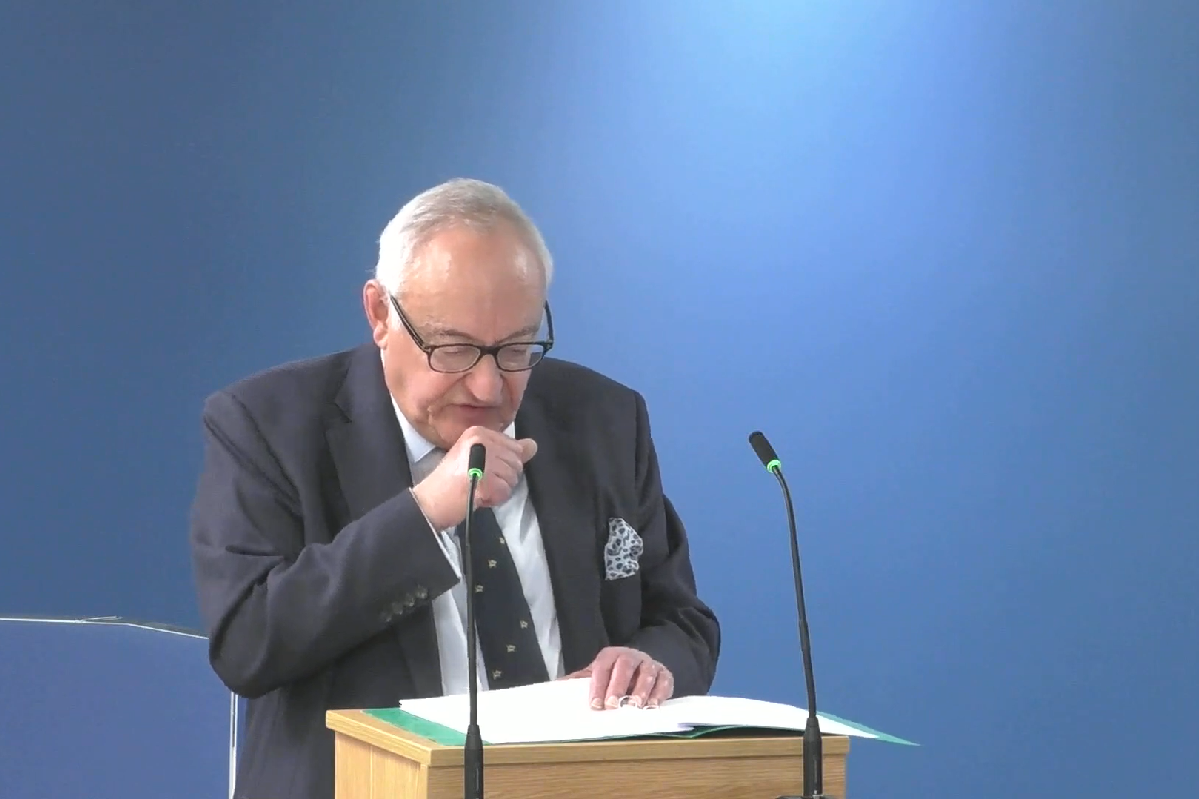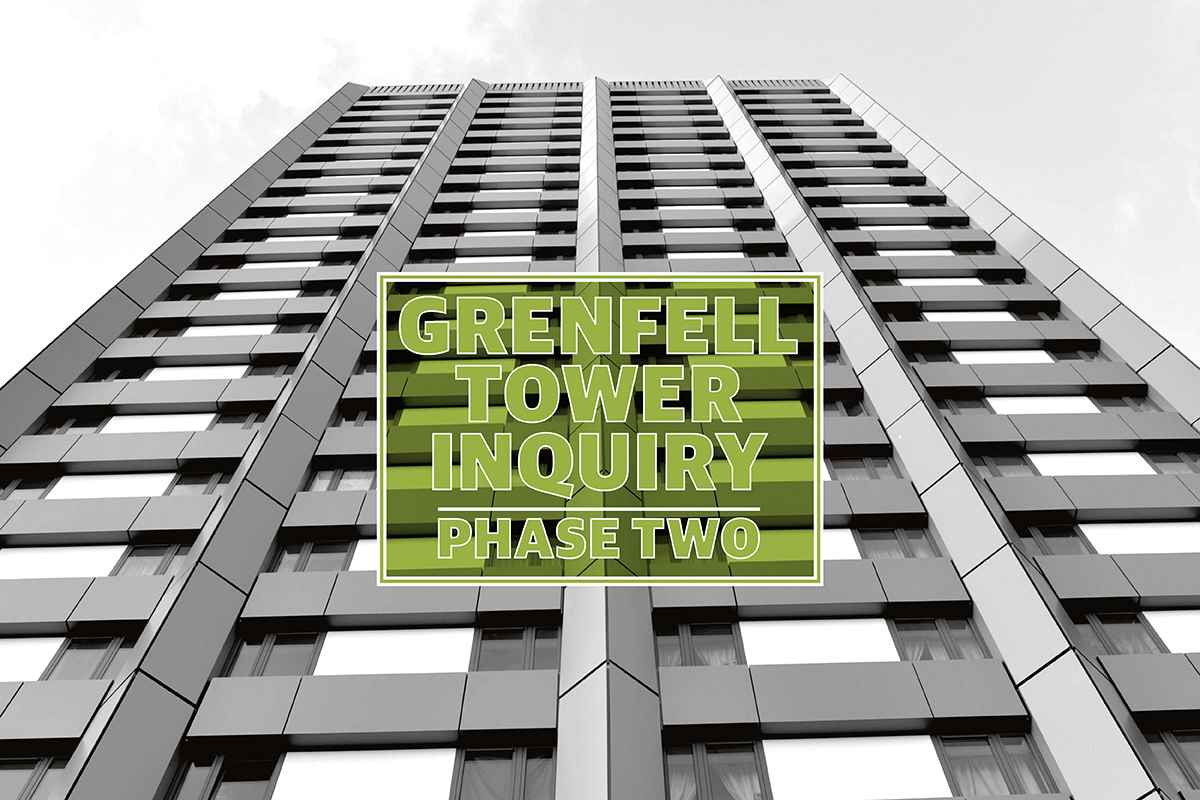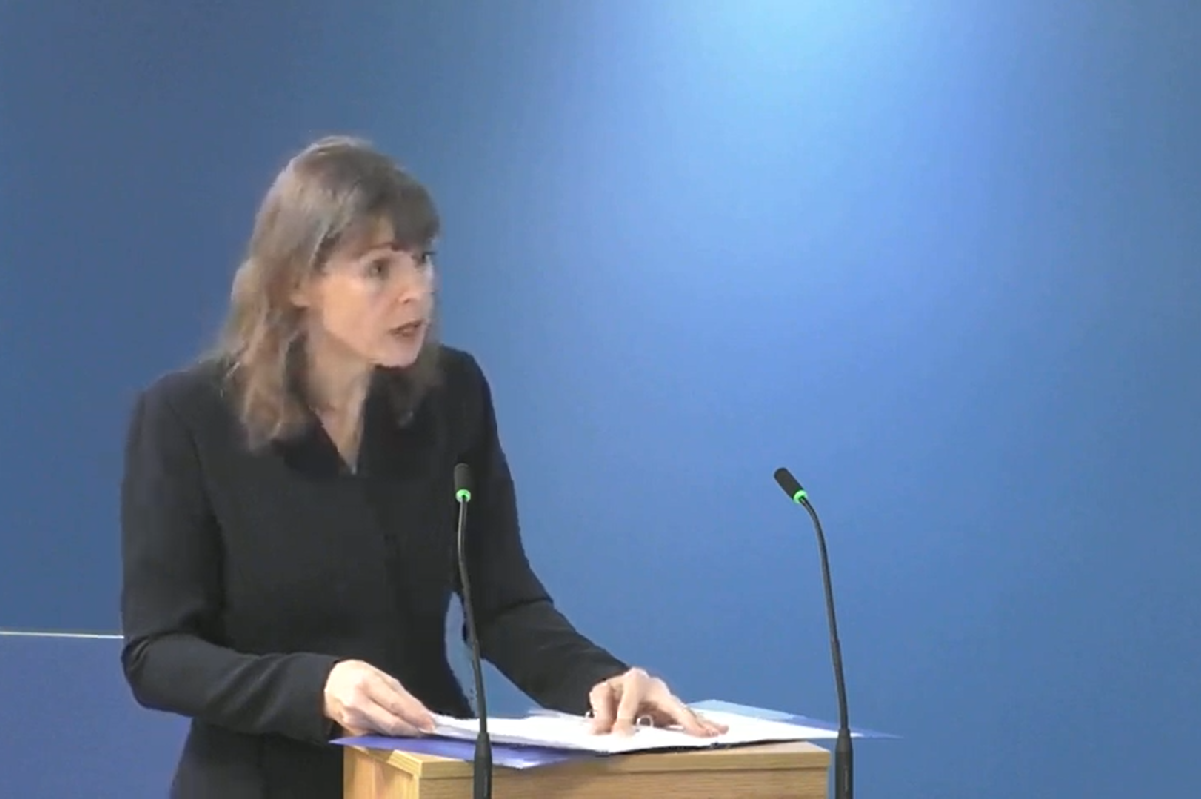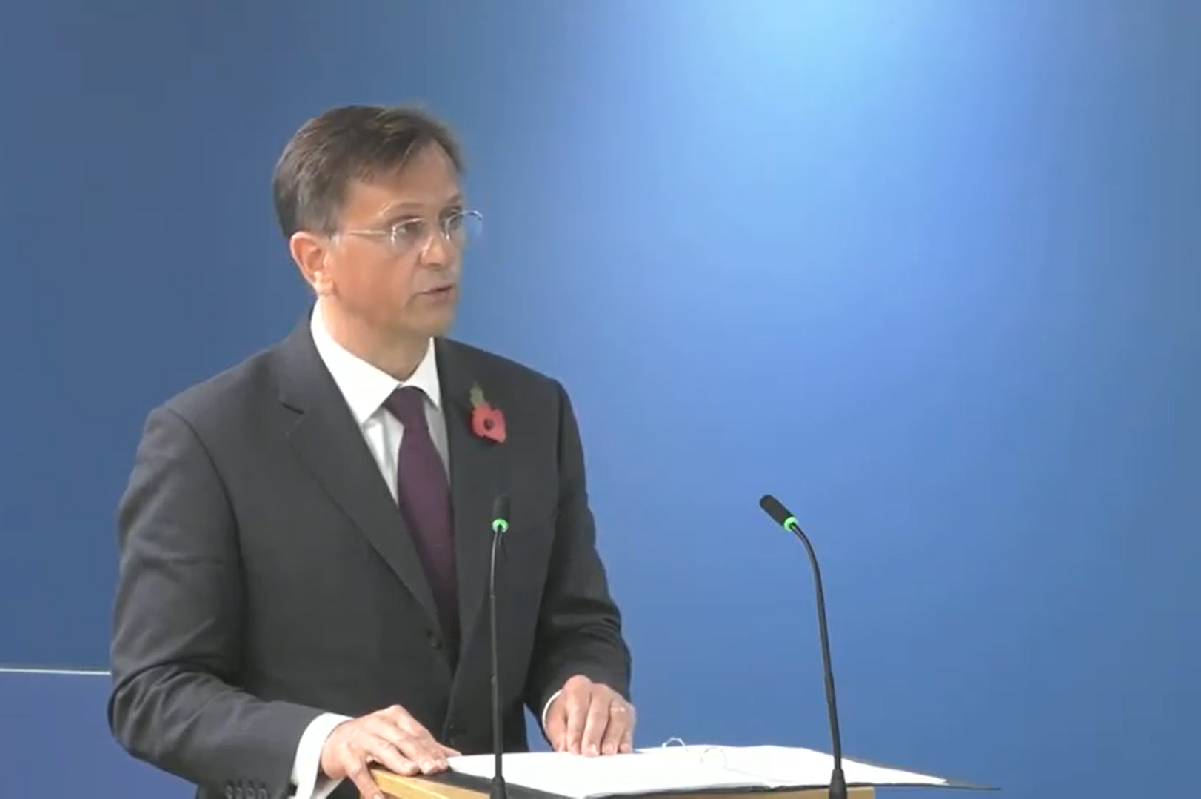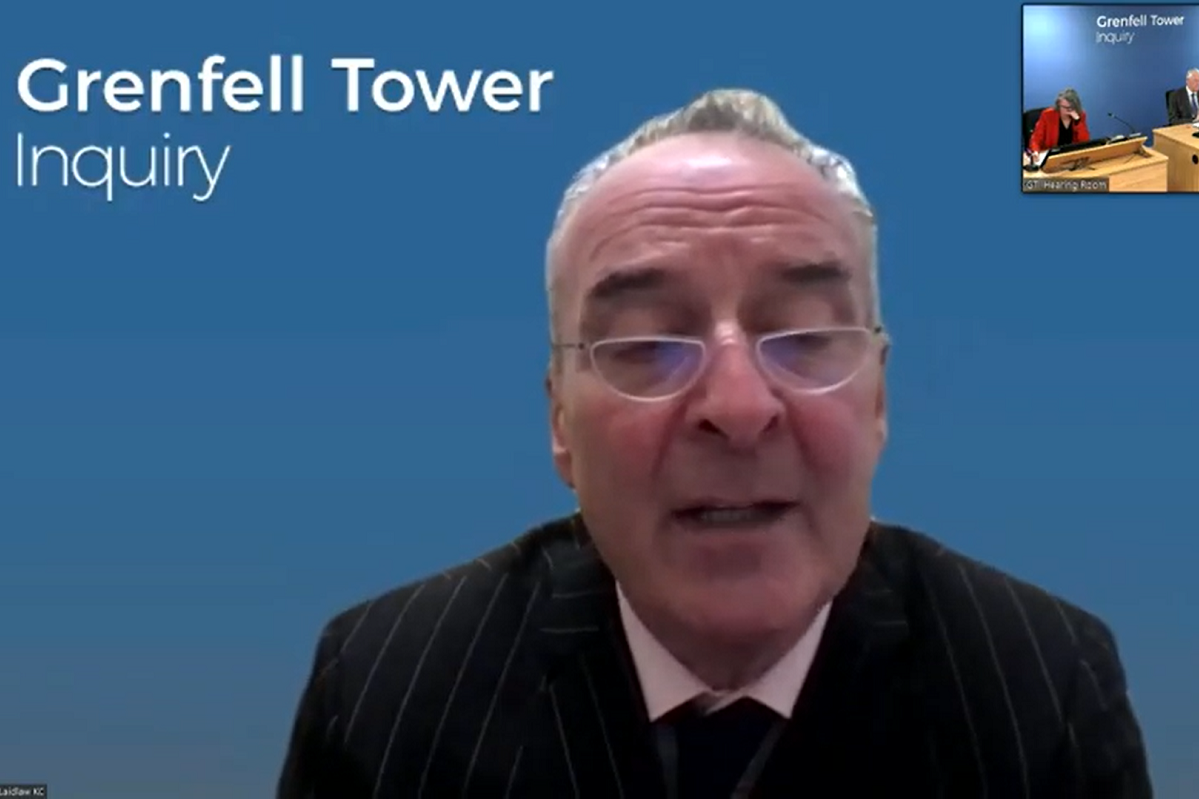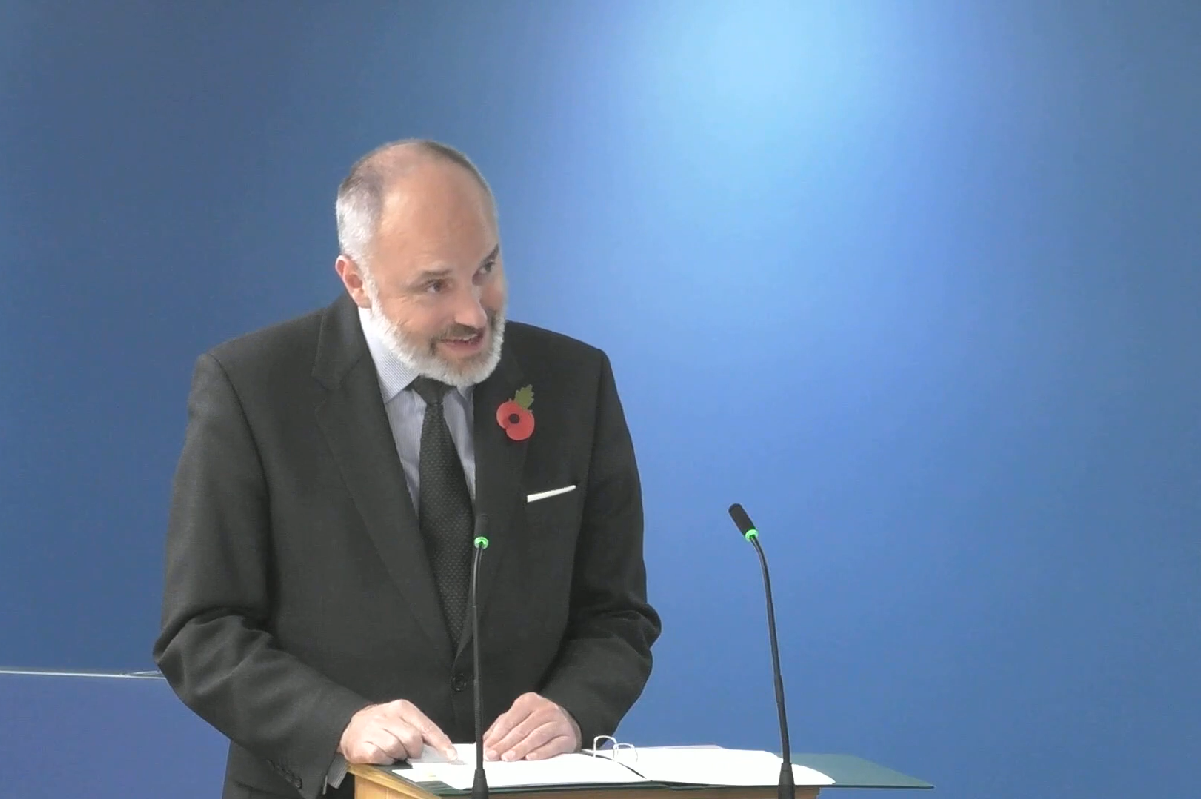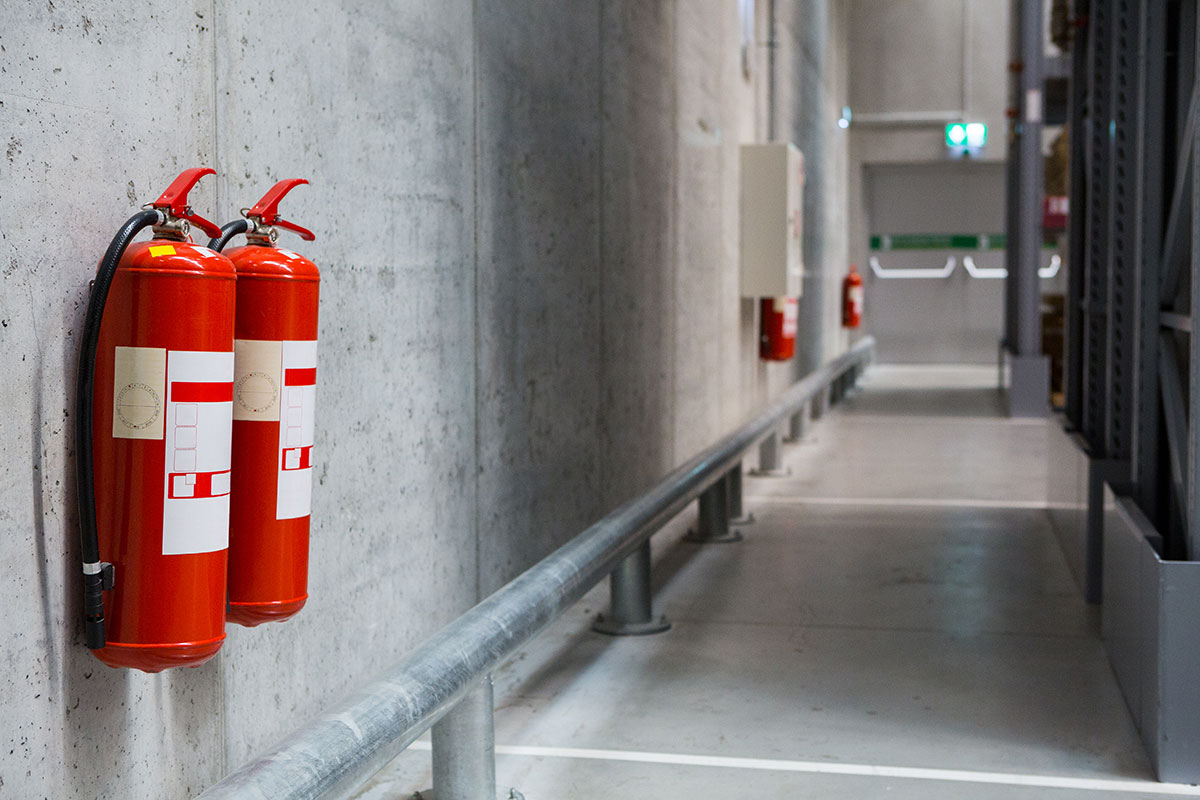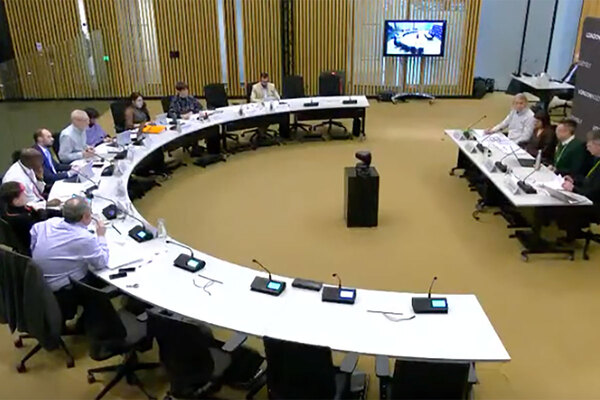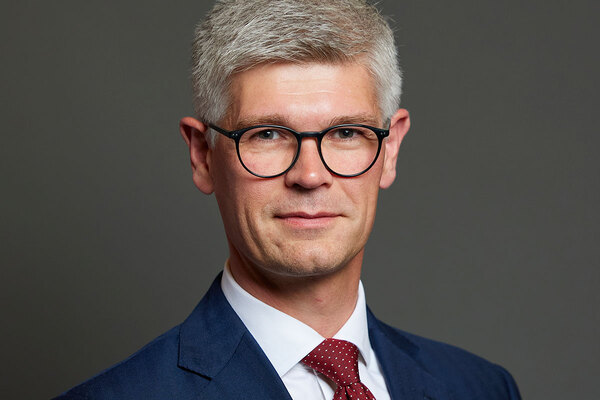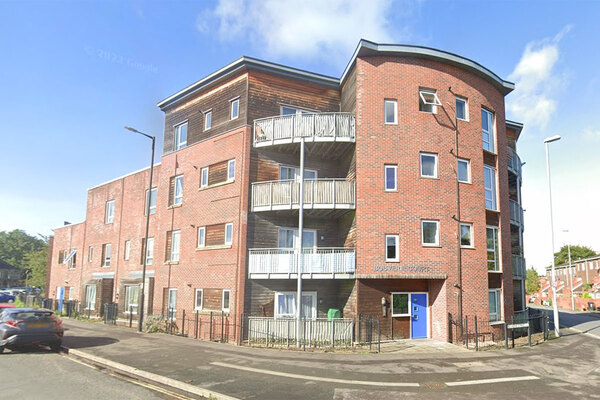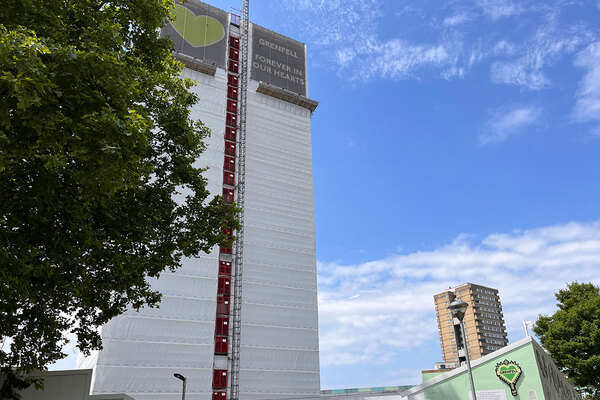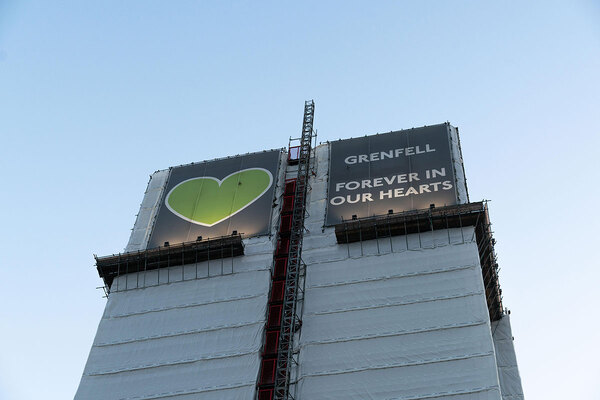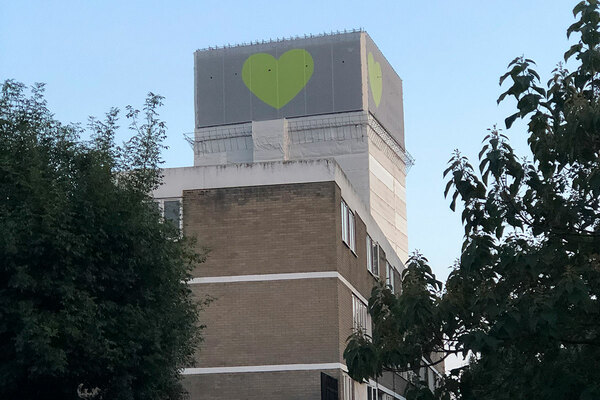Grenfell cladding manufacturer calls failure to release devastating fire tests on material used on tower a ‘non-issue’
Lawyers for the manufacturer of highly combustible cladding used on Grenfell Tower have described its much-criticised failure to disclose devastating fire tests before the blaze as a “non-issue” and claimed that the firm is the victim of an “agenda” to blame it for the fire.
Arconic, the global corporation that made and sold the aluminium composite material (ACM) cladding used on the tower, was yesterday named first in a “rogues gallery” of the most culpable parties for the deaths presented by lawyers for bereaved and survivors.
The inquiry has previously heard evidence that the firm’s French arm had test evidence from 2005 which showed that its ACM burned ferociously when bent into a ‘cassette’ form and could not achieve even the minimum European fire classification.
But it did not release this testing and continued to sell the product, despite further tests in the years before Grenfell repeating the result and mounting internal warnings about the danger associated with its product.
These included a marketing manager writing in 2007 of the possibility of a residential building fire involving ACM causing “60/70” deaths and the firm’s technical manager Claude Wehrle describing the product as “very dangerous” and warning that the firm was “in the know” in emails to his seniors.
The cladding – which includes a core of highly flammable polyethylene plastic – has been identified as the “principle cause” of the rapid fire spread on the night of the fire.
But today Stephen Hockman KC, appearing for Arconic, claimed that the firm was the victim of “an agenda” to condemn it “even before the case has been fully heard”.
He said that at the “material time” the sale of ACM in the UK was “entirely lawful”, demonstrated by almost 500 tall buildings around the country clad in the material.
He described the UK government’s attempt to claim in the immediate aftermath of the fire that combustible cladding was “banned” by its guidance as “a political lie”.
The cladding was sold with a certificate from the British Board of Agrement (BBA) – a respected third-party certification firm – which said it “may be regarded” as having a Class 0 surface and a European fire rating of ‘B’.
Either standard would have been acceptable under official government guidance for the cladding to be used on a high-rise building.
But while Arconic had obtained the European ‘B’ rating when the panel was fixed to a wall with rivets, it had a best rating of ‘E’ when it was bent into cassettes, with testing showing that it burned far faster and released much more heat and smoke in this form. It was ultimately used in cassette form on Grenfell Tower.
However, Mr Hockman said that UK clients would have been content to use the product even if they knew it did not have a ‘B’ rating, so long as it obtained the alternative grade of Class 0.
“If this is right, it would follow that the fundamental line of attack against AAP [Arconic Architectural Products] said to arise from the non-disclosure of the cassette testing in 2005 can be seen as a non-issue,” he said.
The BBA certificate contained diagrams showing both cassette and riveted fixings with no reference to the drastic reduction in fire performance relating to the cassette form.
But Mr Hockman rejected any suggestion that the certificate was “misleading” in this regard, saying that Arconic sold its ACM as a flat panel, which was then fabricated into either cassette or riveted form by others.
He said that if the certificate was “read as a whole”, it became clear that further testing was required to guarantee its safety in any particular system.
“Therefore the primary responsibility for any alleged misuse of the product must lie with those actually responsible for the design and construction of the architectural project in which the product is used,” he said.
Mr Hockman was followed by Geriant Webb KC (pictured above), representing insulation manufacturer Kingspan, which produced a small amount of the combustible insulation used behind the ACM cladding.
Mr Webb referred to testing by inquiry expert Professor Luke Bisby which appeared to show that the ACM was the cause of the rapid fire spread, and that the combustibility of the insulation was not a relevant factor.
“The expert evidence demonstrated in our submission that the presence of the [polyethylene-cored] ACM effectively eclipsed everything else,” he said.
“All of the expert evidence is consistent: the type of insulation made no material difference to the speed and spread of the fire.”
Lawyers for bereaved and survivors yesterday urged the inquiry to “sup with a very long spoon” when considering these arguments, pointing out that Professor Bisby’s tests were relatively small scale and previously untested, and that their experts had not had the opportunity to challenge his conclusions.
Mr Webb also stressed that Kingspan has passed 15 large-scale fire tests since the blaze, which he said demonstrated that the product can be used as part of a safe system.
He added that the firm has “accepted and apologised for the fact that there were shortcomings in relation to the testing and certification” of its K15 product, the material ultimately used on Grenfell Tower.
He added: “Mistakes were made which should not have been made. However, none of those shortcomings were causative of the fire or the nature or speed of the spread of the fire in any way.”
The inquiry has previously seen messages between Kingspan staff members saying “all we do is lie in here” in reference to its fire safety claims about its insulation.
Another staff member said a consultant raising concerns about safety could “go fuck themselves” or Kingspan would “sue the arse off them”.
Mr Webb said the inquiry’s disclosure process had “unearthed a handful of emails and chats involving a small number of former employees which have revealed conduct which was unacceptable and totally inappropriate”.
He said the firm had apologised for this behaviour and added: “These isolated communications, however, are the exception… fire safety is at the very heart of Kingspan Insulation’s business and it could not be taken more seriously.”
He also addressed a test in December 2007, when a cladding system containing Kingspan’s insulation was involved in a serious failure.
An internal document said the test was a “raging inferno” and the Kingspan insulation “burned very ferociously” and was “very different in a fire situation to the previous technology” – a reference to an earlier version of its insulation that had been part of a system that passed a test in 2005.
Today Mr Webb said the test failure was not a result of the combustibility of Kingspan’s insulation, noting that the system also failed when tested with non-combustible insulation in January 2008. He said the failure was a result of the system, not Kingspan’s insulation.
“It was put to several witnesses that this 2007 test somehow demonstrated that new technology K15 failed, even that it failed spectacularly when tested,” he said. “Such assertions are plainly and obviously wrong.”
Earlier, Jonathan Laidlaw KC (pictured above), appearing via video link for cladding sub-contractor Harley Facades, said the evidence has revealed that the fire spread was caused by the selection of materials for the facade, and not any design defects.
He said selection of the cladding products had been undertaken by architecture firm Studio E before Harley joined the job.
Manufacturers, Arconic, Celotex (which made the majority of the tower’s insulation) and Kingspan had “consciously and deliberately pushed dangerous products into the hands of others who both took on trust what they were told and had no realistic means of discovering the truth”, he said.
He also drew attention to the failures of central government to set tougher standards for cladding products. Official guidance allowed the use of ‘Class 0’ panels, despite repeated evidence that dangerous materials such as ACM could achieve this grade.
Most notably, this included government-commissioned testing in 2001 where a cladding system including ACM panels with a Class 0 rating suffered a devastating failure.
“That testing not only highlighted the inherent dangers of ACM as a material, it also demonstrated that the fire safety regime and the use of Class 0 certification in particular was fundamentally flawed,” Mr Laidlaw said.
He also said that Harley Facades’ staff were not fire safety or compliance experts and had relied on others to ensure that the products specified were compliant.
“This is not an exercise in buck-passing, because how on Earth could a cladding contractor be expected or be able to discharge those functions?” he said.
The inquiry also heard from Lee Bennett (pictured above), a barrister representing PSB UK, the designer of the tower’s smoke control system.
PSB UK was also included in the bereaved and survivors’ “rogues gallery” yesterday, with lawyers claiming that the ventilation system allowed smoke to leak out into lobbies inside the tower, preventing residents from escaping.
Stephanie Barwise KC yesterday said that this was “a fundamental and serious issue, compounded by PSB’s specification of substandard dampers”.
Dampers are the component on smoke vents that open during a fire to allow smoke in, but should remain closed at other times to prevent leakage on other floors.
The inquiry has previously heard that PSB’s system featured the lowest possible specification of dampers.
Smoke appeared on many floors very early in the fire with devastating consequences. Three residents died on the 10th floor at around 1.30am after collapsing as they tried to leave the lobby when the lift they were escaping in stopped unexpectedly.
A survivor from the top floor of the tower, where 26 victims died – including 15 who fled from lower floors – has told the inquiry he saw smoke leaking out of the vents in the early stages of the blaze. The thick, black, choking smoke in this lobby discouraged many victims from fleeing.
But Mr Bennett today questioned whether the inquiry could definitively conclude that smoke had leaked from the smoke ventilation system.
He said it would be “dangerous” to reach this conclusion without conclusive evidence and pointed to the “critical significance” of flat-entrance fire doors that failed to self-close, allowing smoke from the external fire to reach the lobbies.
He said that even if smoke had leaked from the ventilation system, “the volume of smoke that could have been spread by this route was very small in the context of smoke spread by other routes”.
Regarding the dampers, Mr Bennett noted that the use of these dampers was acceptable under industry guidance, that no alternative product which could have been used in Grenfell’s system has been identified, and that there is no evidence that the dampers used at Grenfell provided a lower performance than others available.
He added that the system was designed only to deal with “the effects of fire on one floor and to deal with smoke from a single compartment fire”.
He said the system had done this sufficiently when the blaze was contained in Flat 16 on the fourth floor, but the system could not have been expected to deal with the impacts of “a multi-storey fire characterised by the complete failure of the external wall and rapid re-entry of the fire to multiple flats on each level”.
The inquiry continues with closing statements from the BBA, Celotex and others tomorrow.
Sign up for our fire safety newsletter
Already have an account? Click here to manage your newsletters
